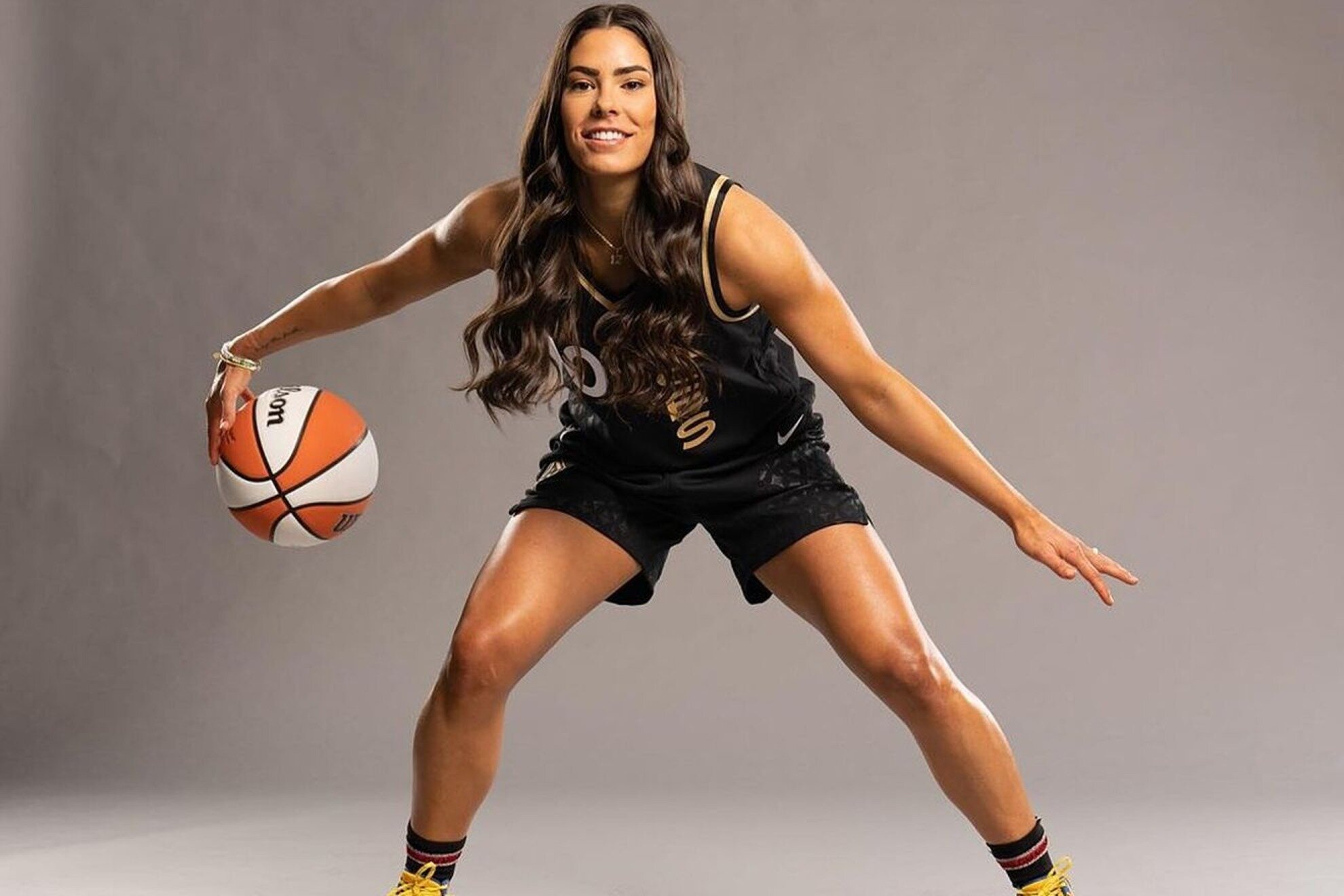The Good, the Bad, and the Ugly: Kelsey Plum Laments Her Journey in Basketball
In the landscape of modern women’s basketball, few players have commanded attention, admiration, and intrigue as much as Kelsey Plum. A standout at the University of Washington, where she became the NCAA’s all-time leading scorer, Plum’s journey from college phenom to WNBA star has been a tale marked by triumphs, challenges, and growth. However, for all her accolades—gold medals, scoring titles, and an All-Star selection—Kelsey Plum has also encountered significant hurdles that have tested her resolve and reshaped her perspective on both basketball and life.
In this reflection, we’ll explore the “Good, the Bad, and the Ugly” of Kelsey Plum’s basketball career—examining what has shaped her, what she’s learned along the way, and the complexities of being a public figure in women’s sports.
From the moment Kelsey Plum stepped onto the court for the University of Washington Huskies, it was clear that she was a generational talent. She was not just good—she was exceptional. Plum’s scoring ability was unparalleled, and by the time she finished her college career, she had set an NCAA Division I women’s basketball record for most career points, amassing a staggering 3,527 points over four years.
Her ability to score from anywhere on the floor—whether from long-range, mid-range, or driving to the basket—was complemented by her basketball IQ, vision, and leadership. She was the type of player who could single-handedly change the course of a game, and that skillset earned her a selection as the No. 1 overall pick in the 2017 WNBA Draft by the San Antonio Stars, now the Las Vegas Aces.
Plum’s professional career began with high expectations, and while the transition from college to the pros can be difficult for many athletes, she seemed to adjust well. Her offensive versatility was immediately apparent in the WNBA, as she began to establish herself as one of the premier guards in the league. The good came quickly: Plum made her mark as a scorer, handling the ball with poise and precision.
But it wasn’t just her offensive prowess that was notable. Over the years, Plum developed into a well-rounded player. She became known for her defensive tenacity, passing ability, and improved playmaking. The Las Vegas Aces, led by Plum, turned into perennial contenders, reaching the WNBA Finals in 2020 and winning their first WNBA Championship in 2022. This achievement was perhaps the ultimate manifestation of Plum’s growth—not only as a scorer but also as a leader, a teammate, and a winner.
Her individual success also extended to the international stage. Plum was part of the U.S. Women’s National Team, winning a gold medal at the 2021 Tokyo Olympics. For many athletes, playing for their country is a career-defining moment. For Plum, it was validation of her skill and the culmination of years of hard work. Her gold medal was not just a trophy; it symbolized the peak of her ascent, a moment where the “good” of her journey came to full fruition.
No athlete’s career is free of adversity, and for Kelsey Plum, the road has been paved with setbacks, some more painful than others.
In 2019, just a year after the Aces had drafted her, Plum suffered a devastating Achilles injury that forced her to miss the entire season. Achilles injuries are some of the most notorious in sports due to their long recovery times and the physical toll they take on an athlete’s body. For Plum, it wasn’t just the injury itself that proved difficult—it was the mental and emotional toll it took on her.
In interviews following the injury, Plum revealed the depths of her frustration. The constant rehab, the feeling of being left behind while her teammates advanced, the doubt that crept into her mind—these were the hidden aspects of being sidelined by injury. While fans saw her absence from the court as just a temporary setback, Plum had to come to terms with the very real possibility that her game would never be the same. The “bad” of her career was starkly illuminated by the months of rehabilitation and the uncertainty of recovery.
Though she returned to the court in 2020, her journey back to peak form was slow and sometimes painful. Her time away from the game allowed her to refine her skills in different ways—she had to re-learn how to trust her body, how to move with confidence, and how to find her rhythm once again. The injury was a setback, but it also marked a period of personal growth and mental fortitude. Plum has spoken openly about the importance of mental health in dealing with injury recovery, emphasizing the need for patience and self-compassion in the face of adversity.
In addition to the physical toll of her injury, Plum has also faced the challenge of finding balance in a life that is often consumed by the pressures of professional sports. As one of the faces of the WNBA, she has become a role model and a leader, but with that visibility comes intense scrutiny. The expectations placed on athletes, especially women in sports, can be overwhelming. In a league that has struggled with financial disparity, gender inequity, and constant battles for media attention, Plum’s position as a high-profile player has placed her at the center of these issues.
The “bad” here is twofold: the personal toll of injury and the professional pressure of representing a sport and a community with limited resources. For Plum, the balance between excelling as an athlete and staying grounded as a person has been a difficult but necessary lesson. She has openly discussed the importance of taking time for herself outside of basketball, focusing on her mental health, and finding joy in other areas of life.
As with many women athletes, Kelsey Plum’s career has also been marred by the ugliness of systemic issues that go beyond the court. The disparity between men’s and women’s professional sports is a reality that shapes the experience of every female athlete. While Plum has been fortunate to play for a team as well-funded as the Las Vegas Aces, the broader challenges of the WNBA cannot be ignored.
One of the ugliest aspects of Plum’s career has been the constant battle for recognition, financial equity, and respect. Women’s professional basketball players, including Plum, have often been undervalued both in terms of salary and media coverage. Despite the obvious skill, athleticism, and entertainment value on display, the WNBA has struggled to command the same level of attention and investment as men’s leagues like the NBA.
In the face of this, Plum has had to not only fight for respect on the court but also advocate for herself and her fellow players off the court. The struggle for equal pay, equal treatment, and recognition is not new, but it remains a deeply frustrating reality for so many in the women’s sports world. And for Plum, as a player who has garnered national attention and fan support, her voice carries significant weight.
Another aspect of the “ugly” in Plum’s journey comes from the persistent gendered expectations placed on women in sports. Whether it’s the focus on her looks, her mannerisms, or the comparisons to male athletes, the public and media have often reduced her identity to something that fits a mold—one that fits societal expectations of what a female athlete should be. For Plum, this has sometimes meant pushing back against unfair scrutiny and finding ways to take control of her narrative.
Moreover, Plum’s own identity has evolved throughout her career. As a young player, she was often seen primarily as a scoring machine, a dominant offensive force. But as she matured, she began to embrace a broader sense of self—a more complete player with a range of skills that extended far beyond the box score. The challenge for Plum has been to stay true to who she is as an athlete while resisting the stereotypes that are so often thrust upon women in sports.
Kelsey Plum’s career has been a study in resilience, as she has faced her fair share of both personal and professional challenges. The good—her record-breaking performances, her WNBA championship, her gold medal—are the culmination of years of dedication, hard work, and natural talent. But the bad—her injury, the emotional toll it took, and the struggle for recognition in a challenging professional environment—have shaped her growth as both an athlete and an individual. And the ugly—dealing with gender disparities, public scrutiny, and the sometimes uncomfortable role of representing women’s sports—has forced her to reckon with the reality of being a woman in a male-dominated sports world.
In the end, it is the lessons Plum has learned from these ups and downs that have defined her. She has learned the value of patience, the importance of mental and emotional strength, and the necessity of advocating for herself and her peers. Her journey is far from over, but if her career thus far is any indication, Kelsey Plum will continue to be a force to be reckoned with, both on and off the court.



